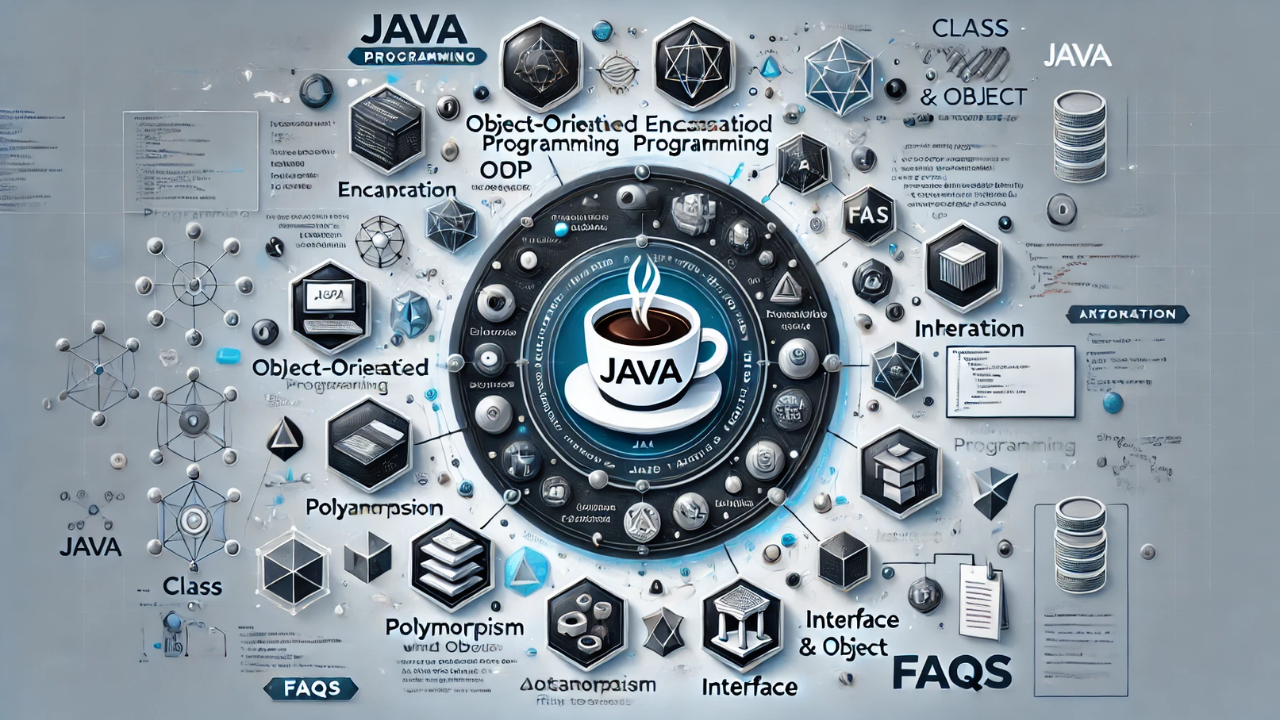
Java, one of the most popular programming languages, is loaded with terminology that might sound like buzzwords to a newbie. These terms are essential to grasp as they often encapsulate complex concepts in a single word. Let’s explore some of the key buzzwords in Java, understand their meanings, and see how they’re used in practice.
1. Object-Oriented Programming (OOP)
What is it?
Object-Oriented Programming is a paradigm centered around objects rather than actions. In Java, everything revolves around classes and objects.
Why it matters:
OOP makes it easier to manage and modify existing code. It allows for code reuse through inheritance and simplifies debugging.
Example:
class Animal {
void eat() {
System.out.println("This animal eats food.");
}
}
class Dog extends Animal {
void bark() {
System.out.println("The dog barks.");
}
}2. Encapsulation
What is it?
Encapsulation is the technique of bundling data (variables) and methods (functions) that operate on the data into a single unit, usually a class.
Why it matters:
It helps protect data from being accessed directly from outside the class, enhancing security and modularity.
Example:
class Person {
private String name;
public String getName() {
return name;
}
public void setName(String newName) {
name = newName;
}
}3. Inheritance
What is it?
Inheritance allows a new class to inherit the properties and methods of an existing class.
Why it matters:
It promotes code reuse and establishes a natural hierarchy.
Example:
class Vehicle {
int speed;
}
class Car extends Vehicle {
int wheels;
void display() {
System.out.println("Speed: " + speed + ", Wheels: " + wheels);
}
}4. Polymorphism
What is it?
Polymorphism allows objects to be treated as instances of their parent class rather than their actual class.
Why it matters:
It enables one interface to be used for a general class of actions, which simplifies coding and debugging.
Example:
class Animal {
void sound() {
System.out.println("This animal makes a sound");
}
}
class Cat extends Animal {
void sound() {
System.out.println("The cat meows");
}
}
public class TestPolymorphism {
public static void main(String[] args) {
Animal a;
a = new Cat();
a.sound(); // Outputs: The cat meows
}
}5. Abstraction
What is it?
Abstraction is the concept of hiding the complex implementation details and showing only the necessary features of an object.
Why it matters:
It reduces complexity and allows the programmer to focus on interactions at a higher level.
Example:
abstract class Animal {
abstract void makeSound();
}
class Dog extends Animal {
void makeSound() {
System.out.println("Bark");
}
}6. Interface
What is it?
An interface in Java is a reference type, similar to a class, that can contain only constants, method signatures, default methods, static methods, and nested types.
Why it matters:
Interfaces provide a way to achieve abstraction and multiple inheritance in Java.
Example:
interface Animal {
void eat();
}
class Dog implements Animal {
public void eat() {
System.out.println("Dog eats bones");
}
}7. Class
What is it?
A class is a blueprint from which individual objects are created. It contains fields and methods to define the properties and behaviors of an object.
Why it matters:
Classes are fundamental to OOP, providing a structured way to create and manage objects.
Example:
public class Car {
String color;
int speed;
void drive() {
System.out.println("The car is driving.");
}
}8. Object
What is it?
An object is an instance of a class. When a class is defined, no memory is allocated until an object of that class is created.
Why it matters:
Objects are the basic units of OOP. They interact with each other to perform the tasks defined by their classes.
Example:
public class CarTest {
public static void main(String[] args) {
Car myCar = new Car();
myCar.color = "Red";
myCar.speed = 200;
myCar.drive();
}
}RealWorld Use of Java Programming you need to know
FAQs
What is the difference between a class and an object?
A class is a blueprint for creating objects. An object is an instance of a class with actual values.
Why is encapsulation important?
Encapsulation protects the internal state of an object and promotes modular design by restricting direct access to some of the object’s components.
Can an interface have implemented methods?
Yes, Java 8 introduced default methods in interfaces, allowing methods to have an implementation.
Wrapping Up
Understanding these Java buzzwords is crucial for anyone diving into programming with Java. They not only help you write better code but also make it easier to understand and collaborate on projects. By mastering these concepts, you’ll be well on your way to becoming a proficient Java developer. Happy coding!

